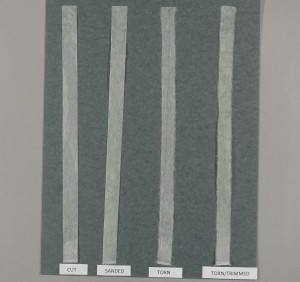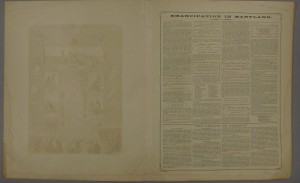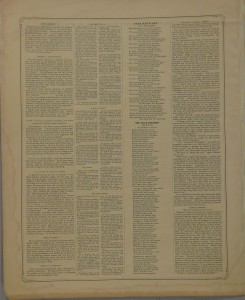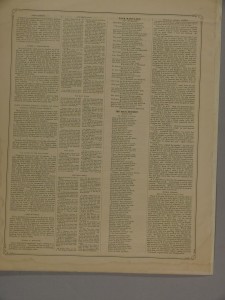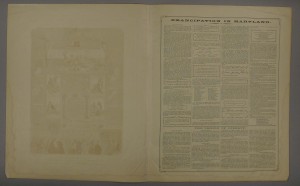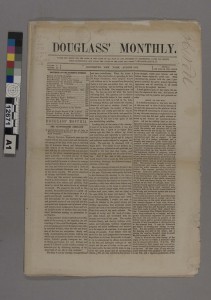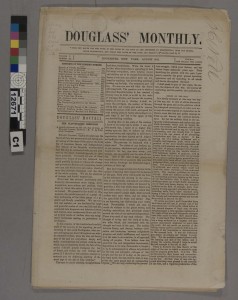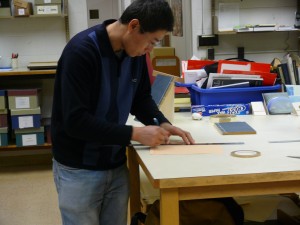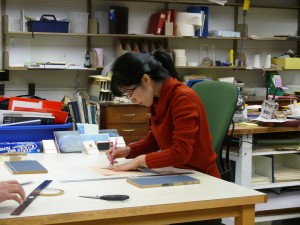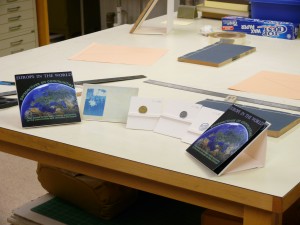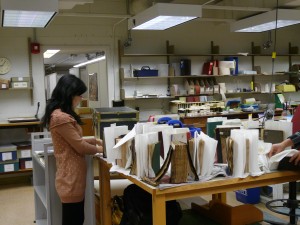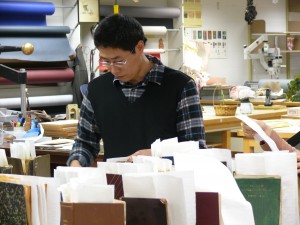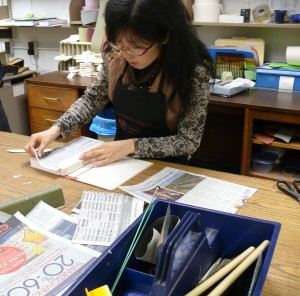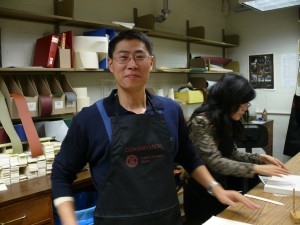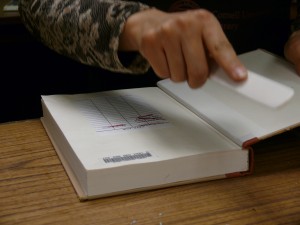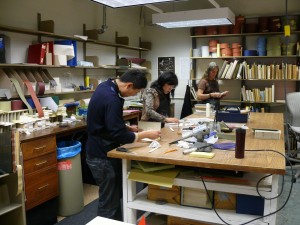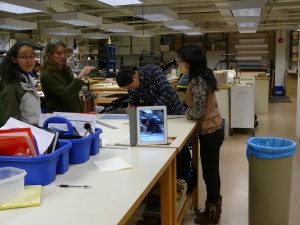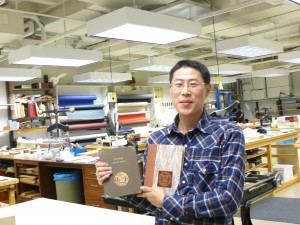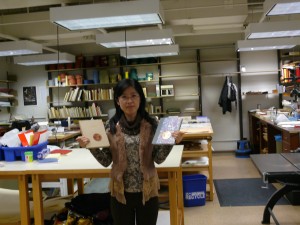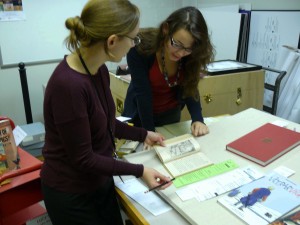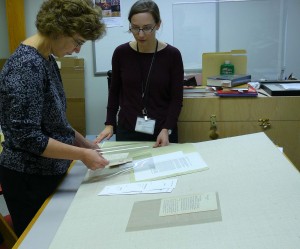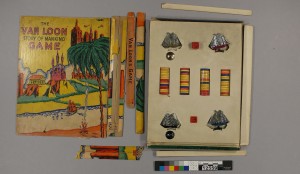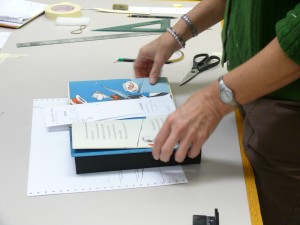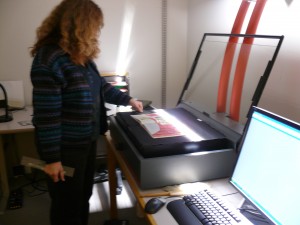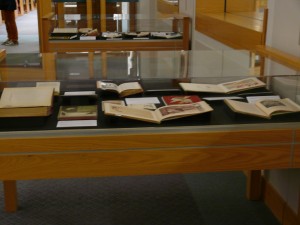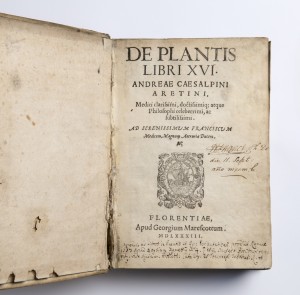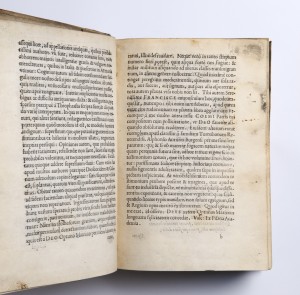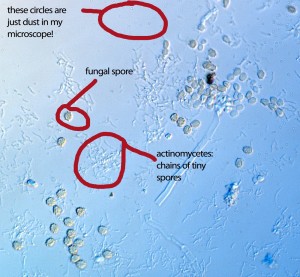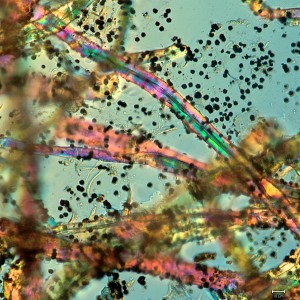by Michele Brown
Preparing repair tissue to be used on historic laid paper is relatively straight-forward. Generally, you tear the tissue after applying moisture using a brush, water pen, ruling pen, damp cloth or other applicator with the goal of getting nice long fibers that will blend into the surface of the paper.
Historic newspapers or other papers with a smooth surface present a different problem. Rather than blending in, repair tissue with long fibers may stand out. Cutting the repair strip with a scalpel is one solution, but the result is a very sharp edge that can still look jarring.
In preparation for an upcoming exhibit celebrating the Emancipation Proclamation, I repaired several newspapers and documents with poor quality paper from the 1860’s. I experimented with various techniques for preparing the repair tissue: tearing along a wet line drawn with a water pen, tearing along a wet line and then trimming the “feathers” with scissors, using a sanding block, and cutting with a scalpel.
Deciding on which repair tissue to use can also call for some judgment. I like to use thin Usu Mino tissue from Hiromi to reinforce folds, edges and tears. It may look somewhat white—especially next to acidic papers–but often blends in surprisingly well.
Occasionally I use tan CK Color Kozo, also from Hiromi, for losses or for reinforcing weak edges on light-damaged papers. Yet while it is similar in tone to the newspapers, it looked too dark when used for reinforcing fragile corners and folds. For these materials, Usu Mino was less noticeable.
For example, on the page below, the corner on the left was reinforced using tan CK Color Kozo. Although the color of the tissue is close to the color of the paper, it looks too dark when pasted over the corner.
The bottom edge on the page below was also reinforced with a torn strip of tan CK Color Kozo. It stands out more than I am comfortable with, and the long fibers give it a somewhat untidy appearance.
Here is the same page repaired with a strip of thin Usu Mino that’s been torn and then trimmed.
Here is another view of the page in the first photo. The tan CK Color Kozo has been removed and replaced with Usu Mino. In this case, I used a scalpel to cut the tissue for the corner repair. The tissue reinforcing the center fold was torn then trimmed.
The top edge of the newspaper below was reinforced from the back with thin Usu Mino, but still looks fragile.
Tan CK Color Kozo was used to fill in losses, and while it doesn’t match exactly it gives the piece a more finished look and strengthens the top edge. In this instance the repair tissue was torn using a water pen.
